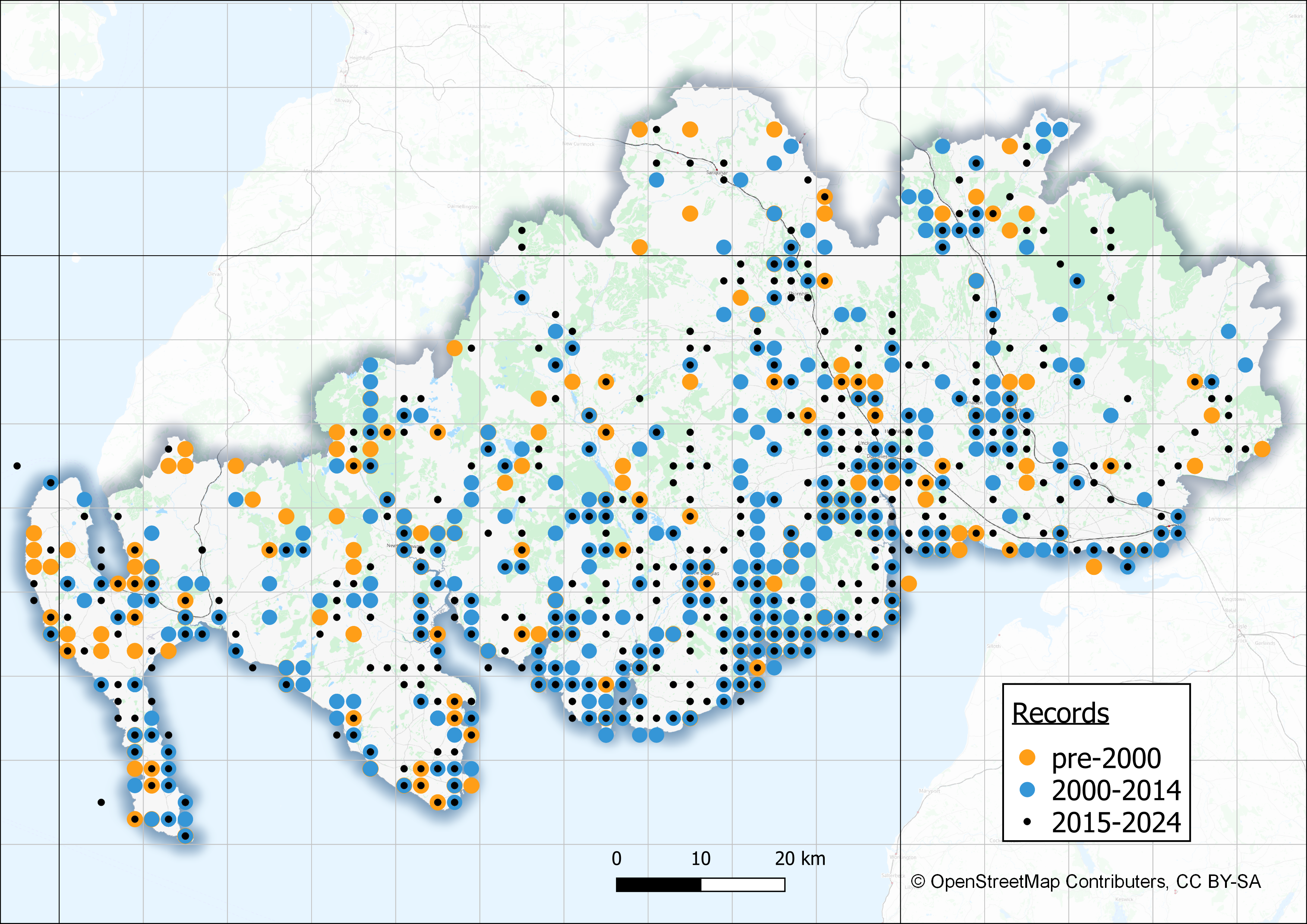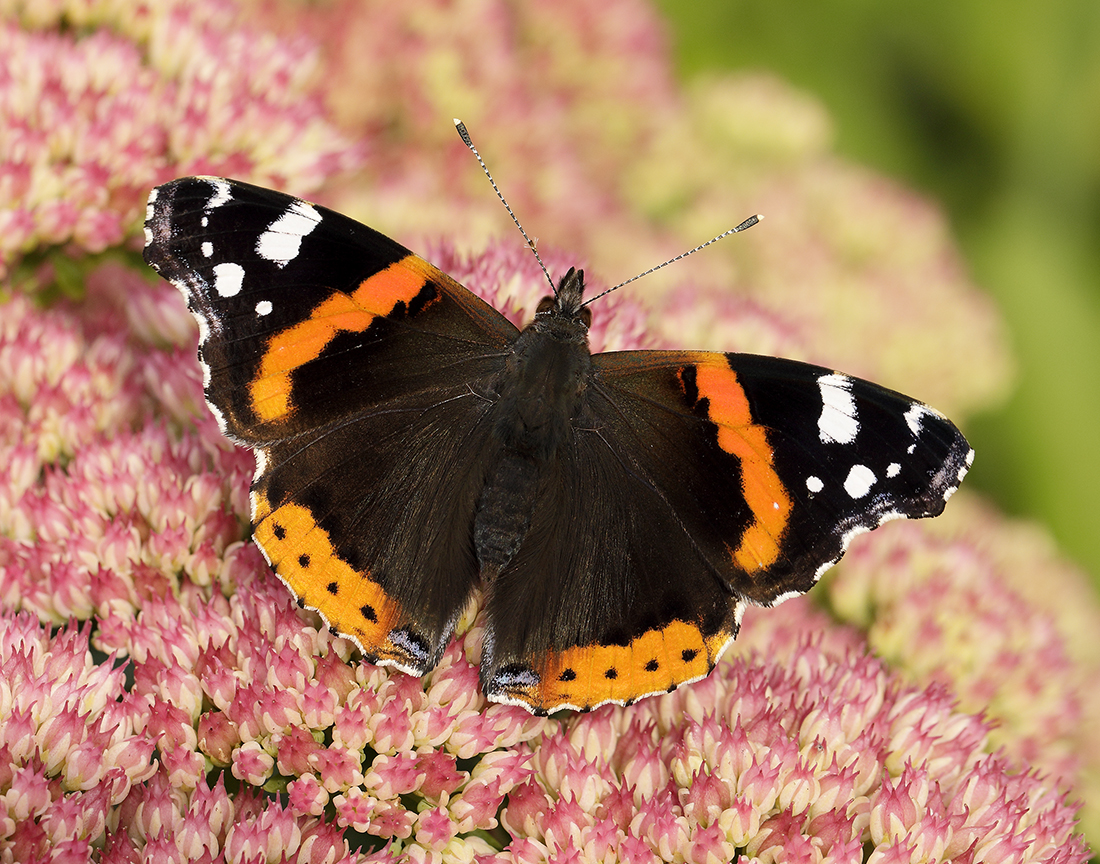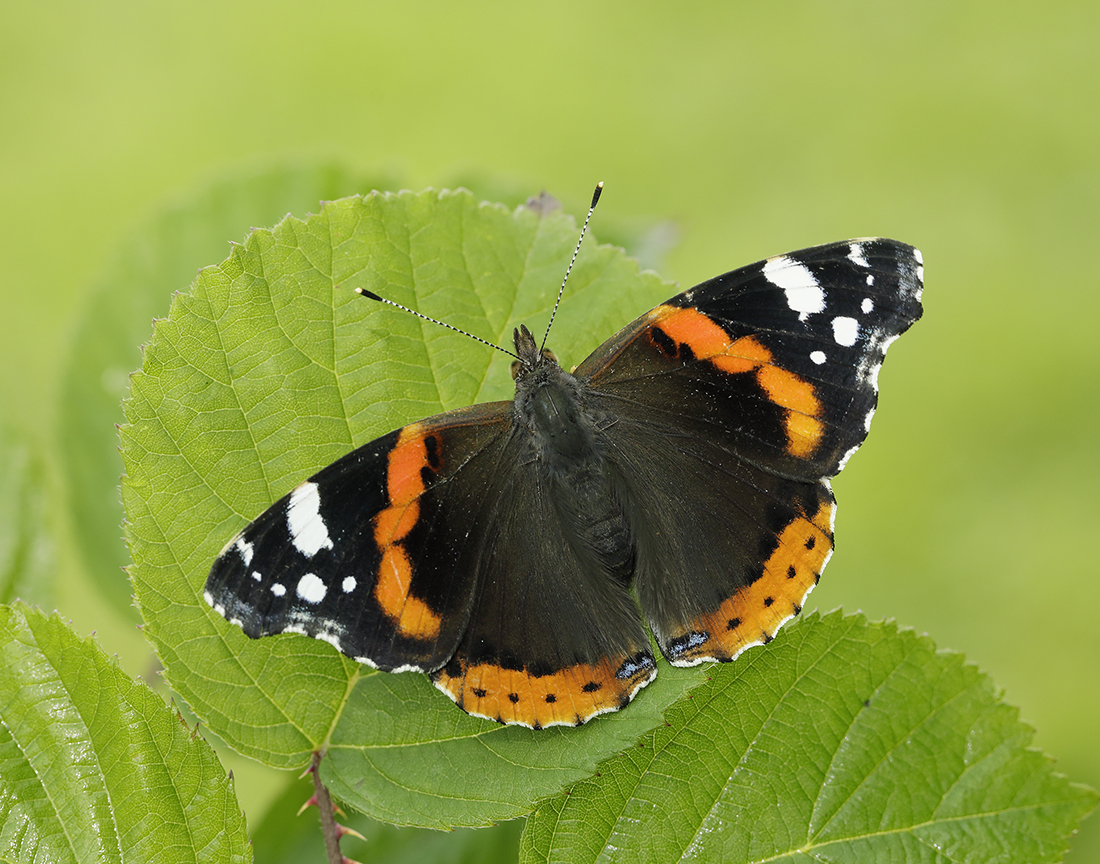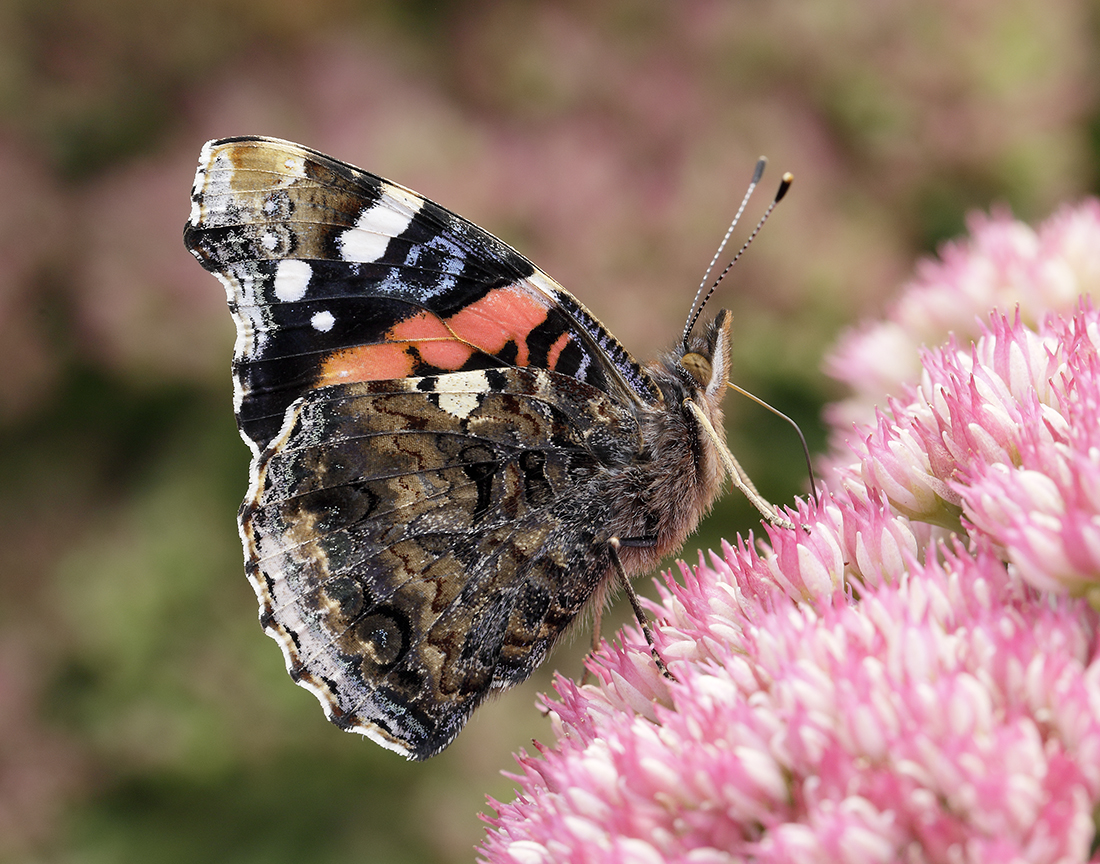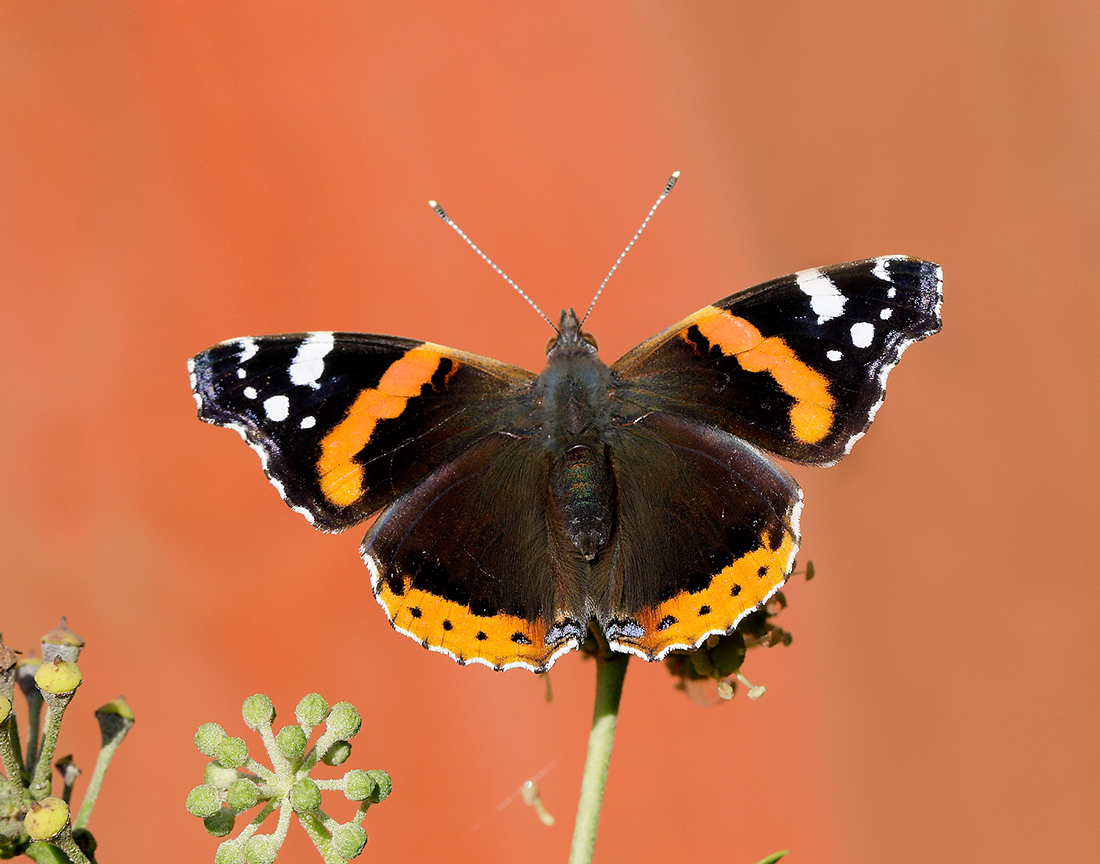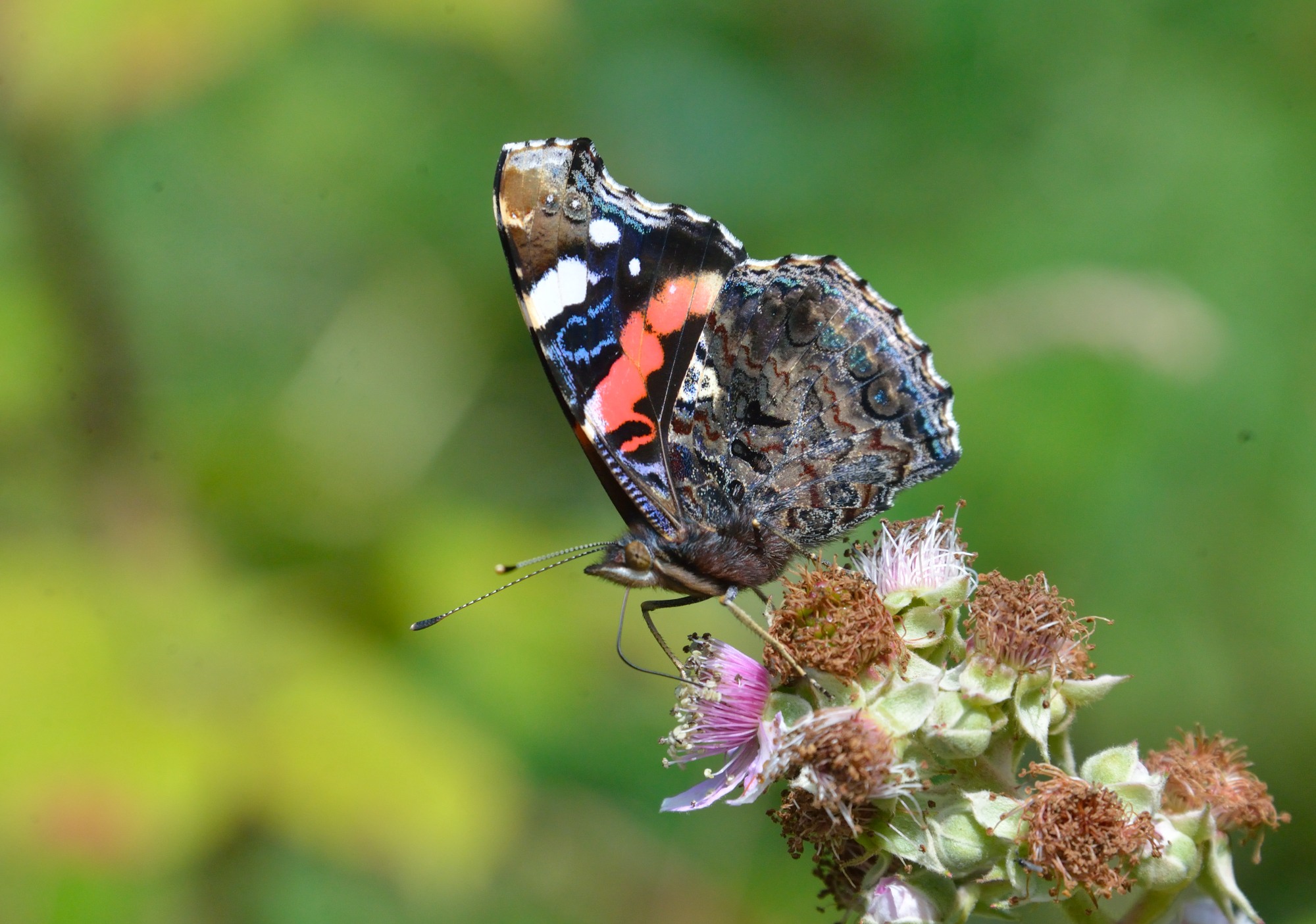In common with other species that migrate to Britain, the trend is of increasing numbers, with large influxes from southern Europe and North Africa becoming more frequent. The warming climate means that more Red Admirals are surviving our milder winters, with adults seen both earlier and later in the year.
Identification
The Red Admiral is a very familiar and unmistakable butterfly, and one of our most distinctive garden visitors. It is large, a powerful flier and very active.
Life cycle & flight period
The Red Admiral may be seen in any month and can have two generations a year, but adults are usually at their peak in the latter half of August. It spends the winter in southern Europe and North Africa, and in spring starts to move north, starting to arrive locally around mid/late June in most years. These butterflies have already mated and the females will soon start the next generation. The early migrants and their progeny are reinforced by more arrivals until late summer.
Adults may be seen well into November in some years, but by then many will already be well on their way south to their overwintering grounds. It seems likely that the milder winters we now experience are allowing more Red Admirals to survive and forego their chance to return to the sun in the south.
There is evidence that adults, pupae, caterpillars and eggs can all survive over winter in the UK in some years, so much so that it has been suggested that the Red Admiral could now be classed as a resident species. However, unlike the Small Tortoiseshell and Peacock, the Red Admiral does not properly become dormant which is why it can sometimes be seen in the winter on warm, sunny days. Naturalists have watched Red Admirals in the autumn and they do not seem to occupy the sheltered places such as outhouses and caves that Small Tortoiseshells and Peacocks use.
Larval foodplant
Females seek out sunny, healthy stands of Common Nettle that are growing on fertile, disturbed ground on which to lay their eggs, preferring fresh young growth as the older plants are less nutritious for their caterpillars. The caterpillars grow fast on their nitrogen-rich nettle diet and, depending on the temperature, can complete their development within a month.
Habitats
The Red Admiral has been seen in virtually all parts of the region, in all habitats, but is most common in urban areas – parks and gardens, and lowland farmland with abundant nettle beds. In late summer large numbers can be seen nectaring on ivy blossom wherever it occurs in open sunny situations, on walls, along hedges and on coastal cliffs.

